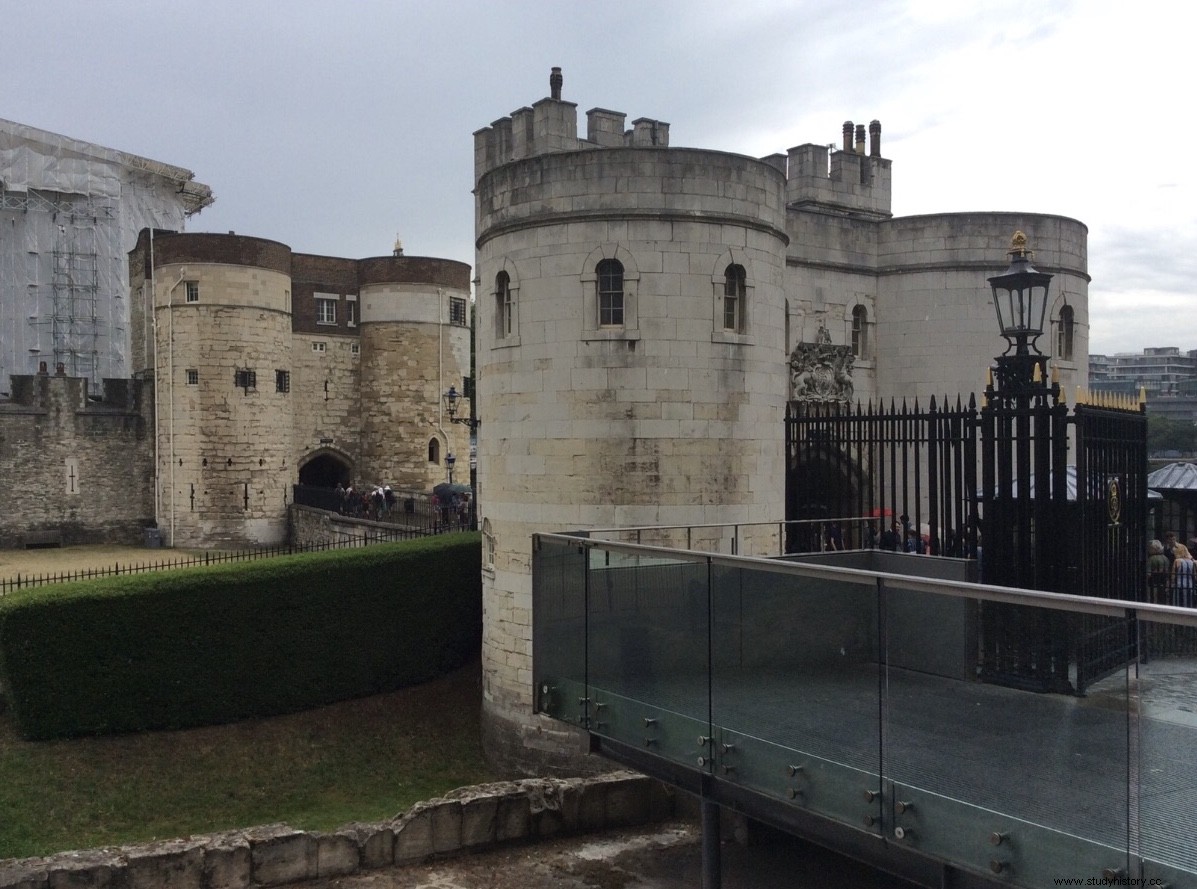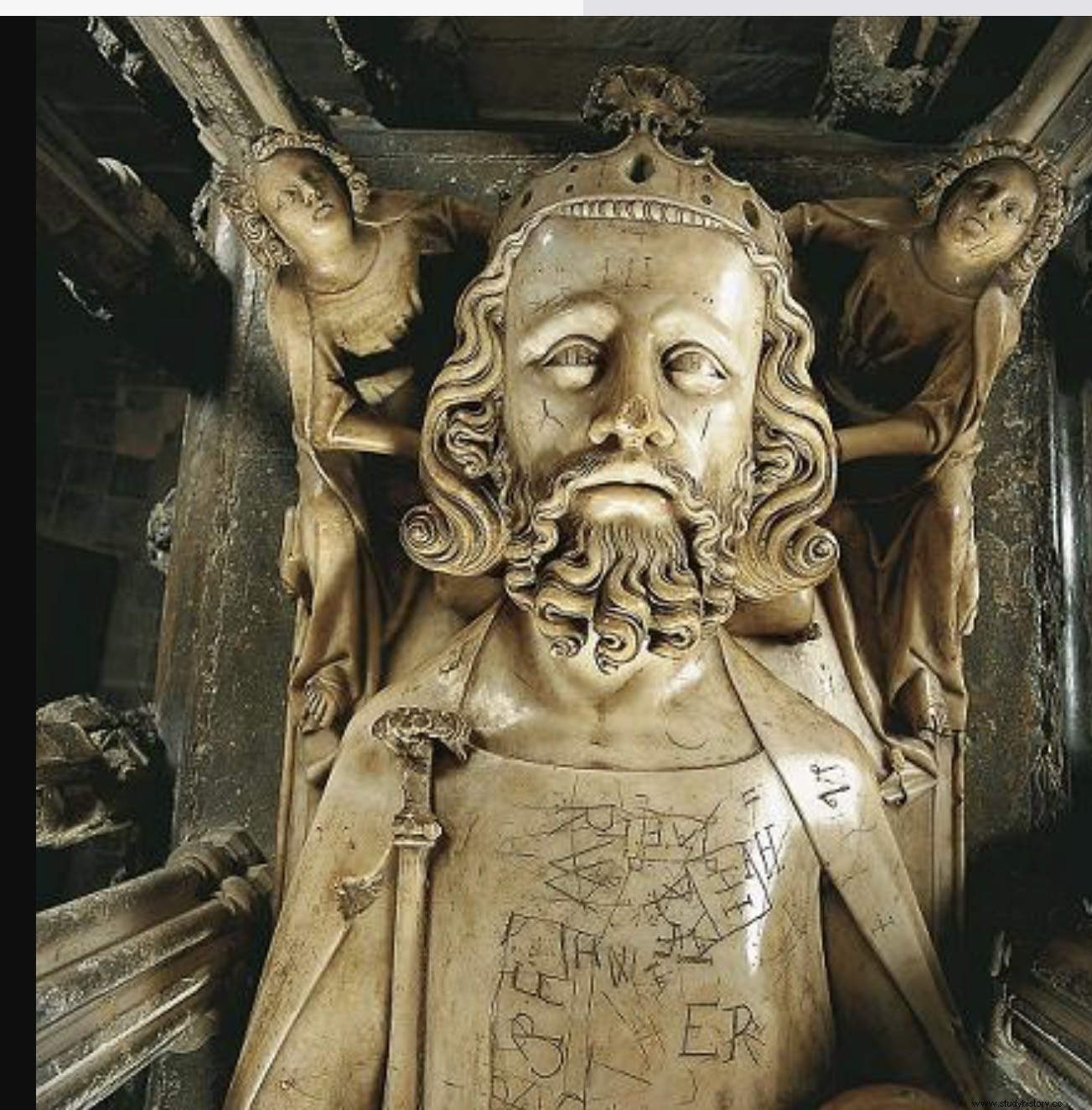The failure of attempts to conquer England (such as that of the Spanish Armada or the Battle of Britain in World War II) has contributed to the myth that British insularity constitutes an insurmountable defense for enemy armies since the Norman invasion of William the Conqueror in 1066, the last time a foreign force succeeded in conquering England. However, during the fourteenth and fifteenth centuries there were landings from the continent on four occasions that they sought and managed to depose the occupant of the English throne, although it is true that in some cases they had internal help. And a fifth invasion dominated a good part of the country and settled in London, although it finally failed. This is the story of "the other invasions of England."
Previous post:The other invasions of England (I)
II.- 1326:Elizabeth, the She-Wolf of France, against Edward II.
The reign of Edward II of England had equaled in disastrous development his grandfather John the Landless. He had put the government in the hands of his favorites (and according to many, lovers) Piers Gaveston first, and Hugh Despenser later, whom he showered with goods and honors. This had earned him the enmity of the main barons of the country (some of whom were imprisoned or fled the country to avoid it or after escaping from prison) and the custom of executing the enemies of each side without trial had become widespread. or after mock trials, the main victims being Gaveston himself on the one hand and the king's cousin, Thomas of Lancaster, on the other. Added to this was the painful defeat suffered against the Scots by Robert the Bruce at Bannockburn in 1314, even more symbolic if the defeated king was the son of the great and terrible Edward I Longshanks.

Among those dissatisfied with the evolution of the reign of Edward II, his own wife, Elizabeth of France, played a prominent role. I cannot fail to take this opportunity to point out that the role Isabel (played by Sophie Marceau) is made to play in the film Braveheart couldn't be further from reality. To begin with, in the period of greatest prominence of William Wallace (1297-1298), Elizabeth was a five-year-old girl; but in addition, Wallace was executed in 1305, while Elizabeth did not set foot in England (not in Scotland) until 1308, after marrying Edward II.
It was precisely the couple's wedding feast that was the first reason for friction between them. At the coronation of Edward and Elizabeth, Gaveston held a place of privilege and the king gave him the great honor of being the crown bearer of Edward the Confessor. And at the wedding banquet it was Edward's and Gaveston's shields that stood side by side, while the king spent the entire ceremony talking and laughing with his favorite while ignoring the bride.
Elizabeth was more than fed up with the humiliations suffered at the hands of her husband, first with Gaveston and then with Despenser, with the cuts in her allowance (which made her write to her brother Charles IV, King of France, complaining that she was living like a servant), and that Despenser's wife had been placed among his retinue to spy on her.
When in 1326 Edward II sent his wife to negotiate peace with his brother, the King of France, Elizabeth complied with her embassy, achieving a fragile truce in Gascony. But once it was over, he did not return to England (understandably he had no desire to return to the undesirable life he led there) but extended his stay in France while it was discussed whether Edward II should travel to France to pay homage through Gascony to Charles IV of France. .
The English king could not leave his kingdom nor did he want to humiliate himself to swear to the French monarch as feudal lord. As a compromise solution, it was agreed that the Prince of Wales Edward would travel in place of his father, receive the titles of Duke of Aquitaine and Poitou that corresponded to Gascony, and take the oath to the King of France under such titles in his own name.
Since her arrival in France, Elizabeth had been in dealings with English lords who had settled on the Continent to escape the tyranny of Edward II and Hugh Despenser. Their communion of interest was reinforced when the queen became the lover of the most prominent of the exiles, Roger Mortimer, who months earlier had fled from his captivity in the Tower of London. 
But any plans they had to return to England to fight the king and his favorite (who had appropriated all of Mortimer's titles and territories) were stopped by the queen, who did not want to endanger her firstborn son Edward, thinking so the king could use it to make her pay for her betrayal.
It was after the Prince of Wales had traveled to the Continent and completed the ceremony of homage to the King of France that Elizabeth dared to reply to her husband's request that she and their son return to England in a letter saying :
Marriage is the union of a man and a woman to lead a life together. But someone has come between me and my husband trying to break the bond. I declare that I will not return until this intruder is expelled. I will wear mourning clothes until I am free from that Pharisee.
When he learned of the relationship between his wife and Mortimer, Edward II convinced the pope to urge Charles of France to stop consenting to this situation in his kingdom. The French king ordered the couple to leave France, but Mortimer had already sought accommodation for them in the county of Hainaut where a wife was found for the young English heir and everything was arranged to invade the island.
On September 24, 1326, a fleet of ninety-six ships landed in England, carrying a small force of fifteen hundred men, German and Flemish mercenaries and the cream of English exile, all led by the queen and her lover Roger. Mortimer (by this time the couple had appeared openly in public at various events, so the situation was no secret in England). They were accompanied by the Prince of Wales, who was thirteen at the time.
Edward II and Despenser were surprised, since they expected an invasion orchestrated by France and from Normandy, and not a small force landing further north from Flanders. In addition, years of tyrannical rule, executions, expropriations and general discontent ended up making true the saying that who sows winds reaps storms and that small invading force soon found itself massively supported within England itself. Especially when the propaganda that Mortimer and Isabel spread throughout the territory indicated that they had come to save the kingdom and the king himself from the pernicious influence of Despenser and that this was the true objective they were pursuing.
As Edward and Hugh Despenser left London and fled to Wales, where they tried to raise an army to oppose the relentless advance of Elizabeth and Mortimer, those loyal to the monarch paid with their lives for the mutiny of the city dwellers or had to flee for their lives. .
On October 26, 1326 Mortimer took the castle of Bristol, where the father of the king's favorite was a refugee. He was summarily executed while Edward and Hugh Despenser the Younger tried to flee to Ireland, but bad sea conditions forced them to take refuge in Wales again.
This move by the king caused Elizabeth and Mortimer to turn the cards face up as to what their intentions were for the kingdom's future if the invasion succeeded. They published a proclamation in Bristol, signed by all the great lords and ecclesiastics of the kingdom (including the king's two half-brothers, sons of Edward I's second marriage), in which they made it known that, by agreement of the community of the kingdom, and given that the monarch had left the country, he was stripped of his authority and his son Edward, Prince of Wales and Duke of Aquitaine, assumed the government as regent of England. On October 26, 1326, at the age of fourteen, and under the strict control of Elizabeth and Mortimer, Edward assumed his new responsibilities.
Meanwhile, deserted by most of his followers and pursued by a party led by the Earl of Lancaster, the king and his retainer desperately fled from castle to castle and abbey to abbey, until they were inevitably stopped. At Hereford in November 1326, in a mock trial Despenser was found guilty of high treason and executed.
But Eduardo II could not suffer the same fate. He was a crowned king in Westminster Abbey and was surrounded by the holy aura attributed to medieval monarchs. In addition, the entire English legal and government system rested on the existence of a monarch as the visible head of the country. We were still a long way from the time when, in 1649, the English would dare to try and sentence a king to death. But it was also evident that the open wounds during the reign of Edward II and his manifest inability to govern made it impossible for this rebellion to end simply with Despenser executed and the monarch restored to the throne. And certainly neither Elizabeth of France nor Roger Mortimer were willing to risk the vengeance of a disgruntled Edward II if he regained power.
Nor was England ripe to consider taking the step of deposing a king, since it was not at all clear who could have the authority to do so (the concept of the intervention of divine design in the institution of the monarchy and in the election of monarchs was deeply rooted). their representatives) and the consequences that this precedent could bring. The only viable option was to convince Eduardo II to be the one who took the step of renouncing the Crown, abdicating and giving the throne to his son. Nor was it going to be easy for him to accept this solution.
A meeting of Parliament was called in January 1327 where the leading churchmen of the realm (the last to speak was the Archbishop of Canterbury) read Biblical precepts condemning bad rulers and those guilty of sodomy (by this time Mortimer and Elizabeth had worried spread the gossip about the relationship between Eduardo and Despenser). Canterbury concluded by introducing the people to the Prince of Wales and urging them to take an oath to protect him and his rights.
Meanwhile, Eduardo was a prisoner at Kenilworth. A delegation of twenty-four nobles and bishops was sent to try to convince the king to abdicate in his son. The monarch refused, but faced with the threat that he would be deposed and that the king chosen to replace him would not bear the blood of the Plantagenets, finally, on January 24, 1327, he informed the country that he was officially resigning in favor of his son.
But if the steps to dethrone a king had been a difficult and unknown path for England in the fourteenth century, how to deal with a former king who had been forced to abdicate was an even more complicated and unknown situation. Captive in different castles, he was a very greedy target to become the pennant of hooking those dissatisfied with the look that Mortimer's government was acquiring.

Up to three attempts were made to free Eduardo de Caernarfon (as Eduardo II was once again known); one while he was at Kenilworth and two at his last place of imprisonment, Berkeley Castle. It was precisely there where he died on September 23, 1327. According to the news that was sent to his son, his death was due to natural causes. However, rumors soon began to spread that he had been murdered and that the person responsible for giving the order to kill him was Roger Mortimer. Little by little, macabre details were added about the manner of his death that alluded to a symbolic and bloody punishment for his condition as a sodomite (specifically, it was said that a red-hot iron bar had been inserted into his rectum) . Be that as it may, Edward II was buried on December 20, 1327 in Gloucester and the reign of his son Edward III began.
But the new king was an example of the Plantagenet dynasty's kind of genetic Russian roulette, alternating great and terrible monarchs with weak and impressionable kings. Edward III belonged to the first group. At just seventeen years old, he led a coup that stormed Nottingham Castle where Mortimer and Elizabeth were staying. Mortimer was imprisoned and executed and Elizabeth removed from the political front line (although later she was used again for diplomatic purposes). Edward III would rule England with a firm hand for the next forty-seven years, starting the Hundred Years' War in which he and his descendants claimed the crown of France.
Article originally published in Number 13 of the Discover History magazine.
Images| Author archive.
